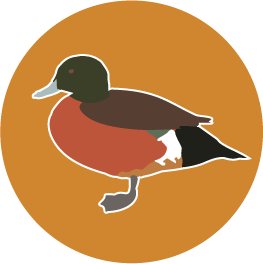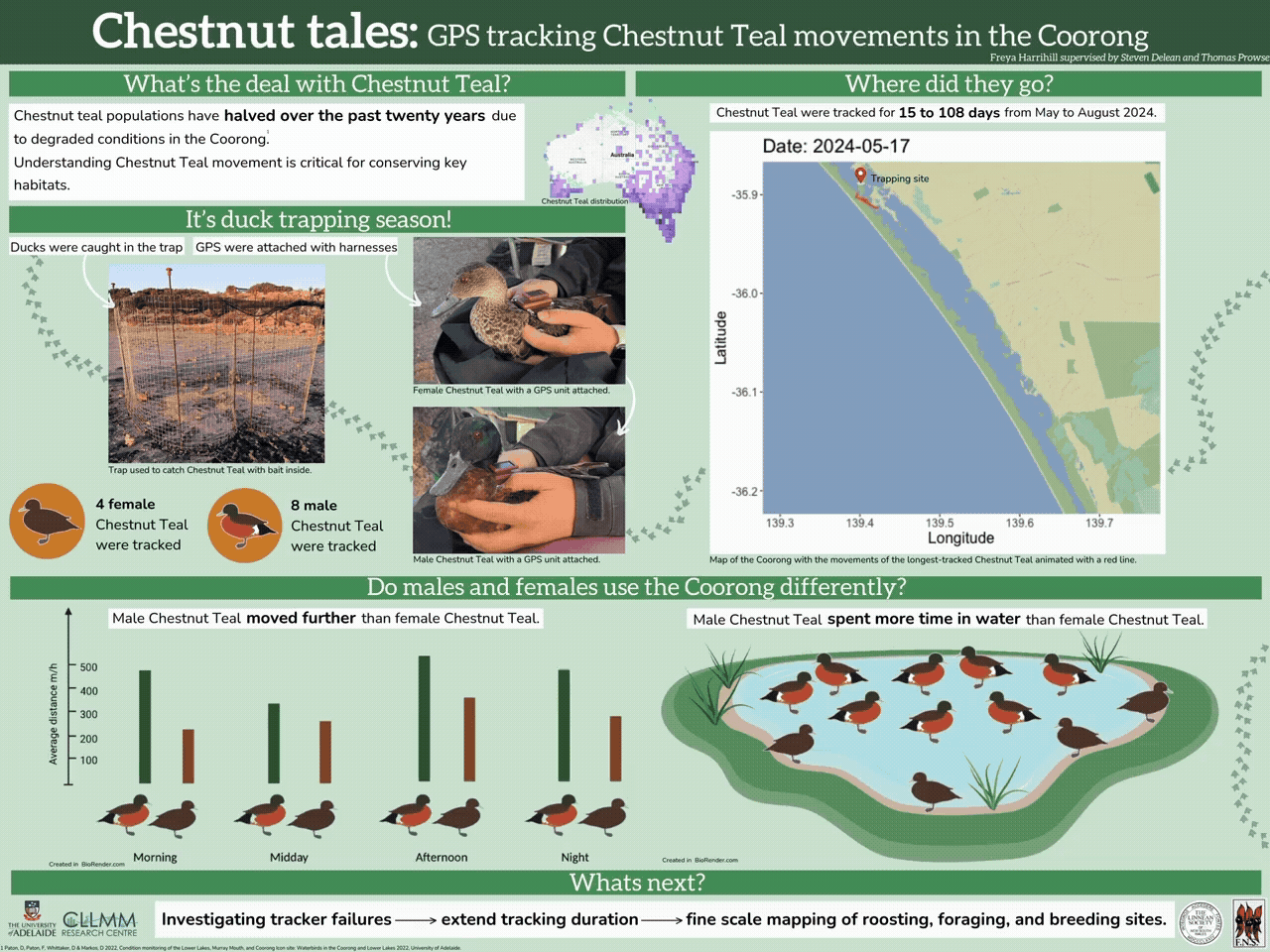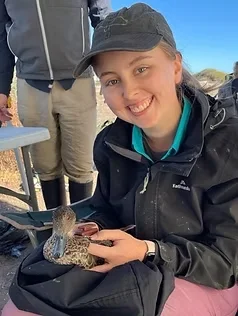Student: Freya Harrihill (University of Adelaide)
Supervisors: Steven Delean, Tom Prowse (University of Adelaide)

Wetlands worldwide are being degraded, with up to 90% loss in some areas. Australian wetlands essential for waterbird populations are threatened by changed water regimes, leading to habitat loss. Waterbird populations have declined more than 50% over the past forty years in the Coorong, Lower Lakes and Murray Mouth (CLLMM) wetlands of South Australia. Chestnut Teal is a common, herbivorous waterfowl recognised as an indicator of change within coastal wetlands of the CLLMM region, however there is little information available about its movements or habitat use that could inform drivers of population change. Twelve Chestnut Teal were tracked using Ornitela GPS telemetry for between 15 and 108 days between May and August 2024. Chestnut Teal movements varied across the diurnal cycle, were highest early morning and late afternoon, and males moved further than females. Water depth references also varied across the diurnal cycle, but the pattern of behaviour varied across sections of the Coorong. Water depth preferences varied between the sexes, with males spending more time on the water than females. Total distances moved varied considerably between individuals, ranging from 4 to 12 km per day. Home ranges ranged from 40 ha to 38,000 ha (averaging 8000 ha). The study provides a proof-of-concept that tracking Chestnut Teal can inform movement ecology and habitat use and guides development of improved harness and optimal tracking technology to allow longer tracking periods to better understand the impacts of changing environmental conditions over annual and longer cycles on waterfowl populations.
Learn more about this study.
Freya's Thesis

Project title: Movement Ecology of Chestnut teal in the CLLMM region of SA.
Project focus: To use GPS technology to identify key habitats and movement patterns of Chestnut Teal.
What led you to this focus area? I have spent time over the past few years working in the Coorong, contributing to long term waterbird monitoring projects.
Outcomes of the project: Movement data collected from GPS devices to track the movement of Chestnut Teal within the CLLMM and understand how they utilise different habitat niches within the region.
How will the project inform understanding of climate change in the CLLMM? This project will contribute to a baseline of knowledge regarding waterbird behaviour under current climatic conditions. Furthermore, long term tracking projects can use waterbirds as indicators of change within wetland systems, such as the CLLMM.
What would you be doing if you were not a researcher? A professional chef or baker.